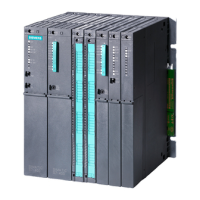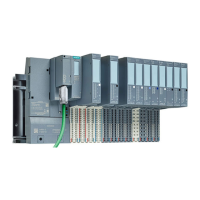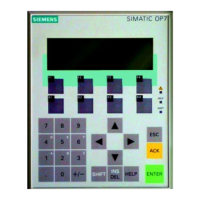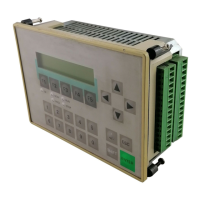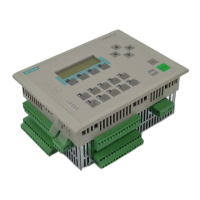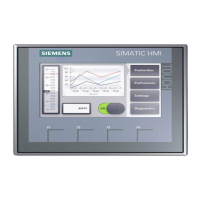I/O configuration variants
6.5 Using single-channel switched I/O
CPU 410 Process Automation/CPU 410 SMART
System Manual, 05/2017, A5E31622160-AC
71
PROFINET IO interfaces are located on two different IMs, this is known as an R1
configuration The R stands for redundant IMs and thus for two PROFINET IO interfaces. See
Chapter Communication services (Page 308).
You can use the following interface module for the I/O configuration at the PROFINET IO
interface:
Table 6- 5 Interface module for use of single-channel switched I/O configuration at the PROFINET
IO interface
IM 153-4 PN V4.0 and higher
IM 155-6 PN HA 6DL1155-6AU00-0PM0
Single-channel switched I/O and user program
In redundant operation, in principle any subsystem can access single-channel switched I/O.
The data is automatically transferred via the synchronization link and compared. An identical
value is available to the two subsystems at all times owing to the synchronized access.
If you have connected the I/O over two IMs, the CPU accesses the I/O over one IM. The
active IM is indicated by illumination of the ACT LED.
The path via the currently active DP interface or PROFINET IO interface is called the
, while the path via the other interface is called the
. The DP or PNIO
cycle is always active on both channels. However, only the input and output values of the
active channel are processed in the user program or output to the I/O. The same applies to
asynchronous activities, such as interrupt processing and the exchange of data records.
Failure of the single-channel switched I/O
The fault-tolerant system with single-channel switched I/O responds to errors as follows:
● The faulty I/O is no longer available if an input/output module or a connected device fails.
● In certain failure situations (for example failure of a subsystem, a DP master system or an
IM153-2 DP slave interface), the single-channel switched I/O continues to be available for
the process.
This is achieved by a changeover between active and passive channel. This changeover
takes place separately for each DP or PNIO station. A distinction is made between the
following two types of failure:
– Failures affecting only one station (such as failure of the DP slave interface of the
channel currently active)
– Failures affecting all stations of a DP master system or PNIO system
These include removal of the connector at the DP master interface or PNIO interface,
shutdown of the DP master system (for example a RUN-STOP transition on a CP 443-
5), and short-circuits at the cable harness of a DP master system or PNIO system.
The following applies to each station affected by a failure: If both DP slave interfaces or PN
IO connections are functional and the active channel fails, the channel previously passive
automatically becomes the active channel. A redundancy loss is reported to the user
program when OB 70 starts (event W#16#73A3).

